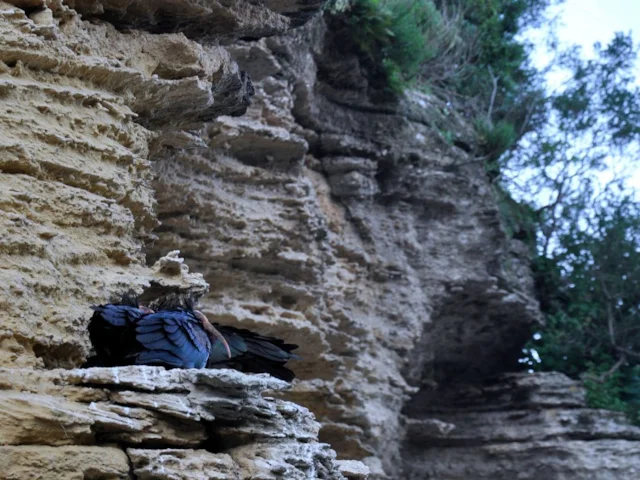Turkish bald ibises on the up
7f69205d-941e-443f-a0f7-6e27194924fa

The Turkish population of the Critically Endangered Northern Bald Ibis appears to be on the mend, after a successful breeding season.
The semi-wild Northern Bald Ibis population at Birecik, southern Turkey, near the Syrian border, has produced six birds that have been released as part of trial re-introduction work in late July.
A dedicated team first caught all the birds for the annual ringing and check of the birds at the Birecik ‘Kelaynak’ breeding station run by the Turkish Ministry of Nature Protection and National Parks, and six were selected for release, in the hope that they would survive and migrate. Three were fitted with satellite transmitters, and to reduce the chance of persecution their bright rings were replaced with less conspicuous ones. Four of the birds were juveniles from this year, but two one-year old birds were also released.
This population formerly numbered 3,000 individuals in 1930, but the use of the pesticides DDT and human disturbance reduced them to a mere 400 in 1982. A program to save the remainder began in 1977 but the small, genuinely wild colony disappeared leaving five pairs by 1986, which fell to just a lone individual in 1989; the following year, resulted in the wild colony being declared extinct.
Up to 41 wild birds were trapped between 1977 and 1989 to create a captive breeding colony, and the resulting offspring have been continually reintroduced into the wild, in the hope that they would migrate with the wild birds, though very few actually did. Since 1989, 155 birds have disappeared in the wild, their fate unknown, but shooting is a known and prevalent problem in the Middle East. The Birecik colony survives only as a semi- wild population, as they are kept in aviaries in winter, and released in spring to breed on nearby cliffs, being recaptured in autumn. This ongoing project had increased the population to 100 in 2009.
From the summer of 2007, Birecik Northern Bald Ibises have been fitted with satellite tags, which revealed that some birds at least were visiting the recently discovered Palmyra colony in Syria, which now almost extinct owing to the country's current political strife, with just one remaining ibis. At least three of these wandering birds were killed by electrical lines recently.
This year, the birds remained very close to the breeding station for about two weeks, feeding at local sites and using supplementary food provided. Five birds have now departed south, stopping off very close to Palmyra. The researchers hope to find out whether the birds can manage their full migration and where they will go by monitoring the signlas from the satellite tags, which were provided by Doga Dernegi (BirdLife in Turkey), with Monaco Foundation and RSPB support.
To find out more, visit the BirdLife Preventing Extinctions Programme.

